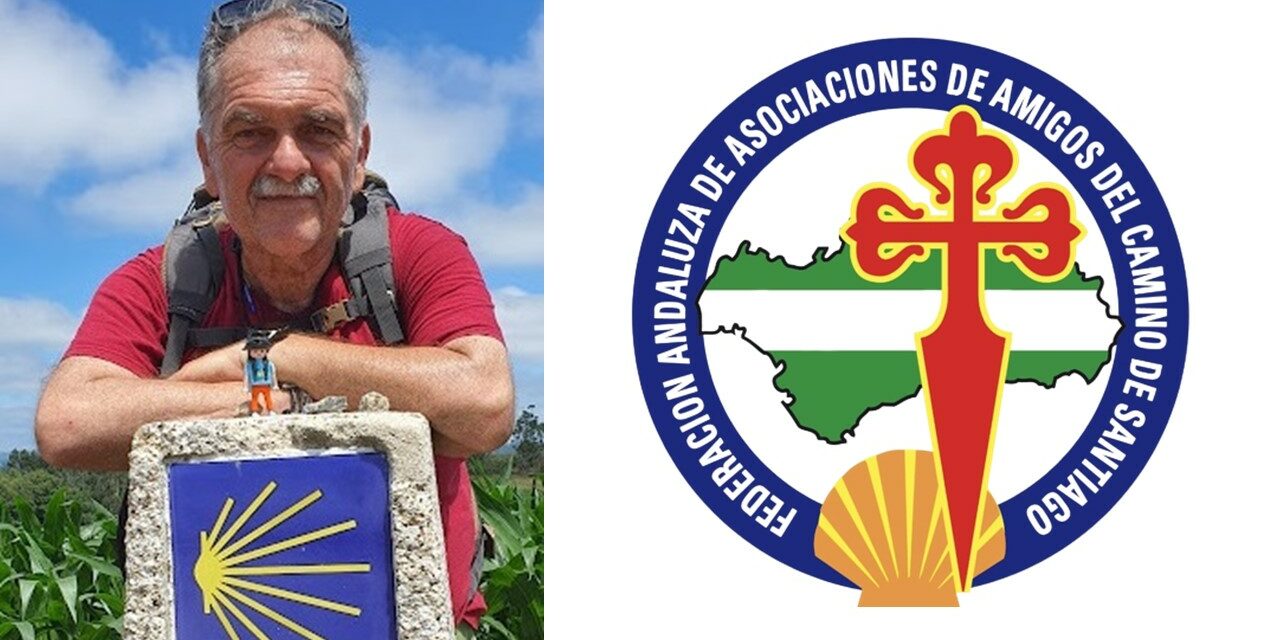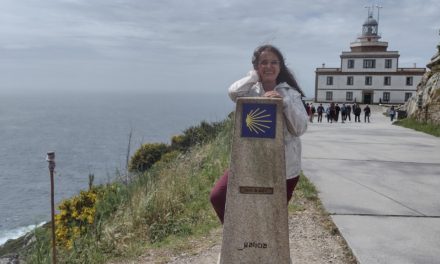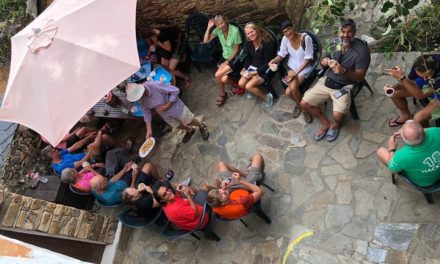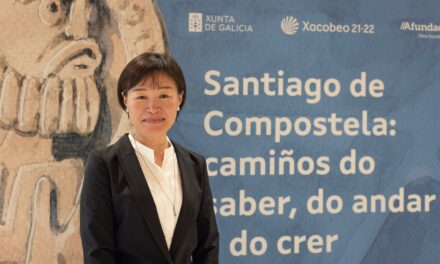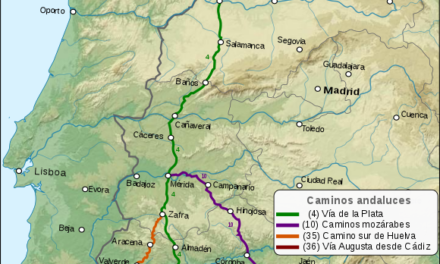The Jacobea Foundation dedicates part of its space and projects to the work and history of the Jacobean Associations, some of which have formed federations or groups to unite their efforts and work collectively. This is the case of the Andalusian Federation of Associations of Friends of the Camino de Santiago, a group of five associations -Cádiz, Córdoba, Jaén, Málaga, Seville- which are responsible for the maintenance of 1,300 kilometres of paths and the care of more than 15,000 pilgrims that set off every year for Santiago de Compostela. We spoke with Jacinto Fuentes Mesa, President of the Jaén Association and current President of the Andalusian Federation.
-Jacinto, at the Jacobean Foundation we are interested in the human element of the Camino, that is why we take care of the Jacobean Associations, but also of each individual pilgrim. For that reason I would like to start the interview by asking you something personal: How did Jacinto Fuentes Mesa get to the Camino de Santiago?
-Since the 1990’s my mind had been set on doing the Camino de Santiago, but the years passed and I could never find an appropriate time to do it. The curious thing is that I was one of a group of friends who belonged to the Governing Board of the Weekly Brotherhood of ‘Holy Week’. When we stopped belonging to that board, our friendship was so strong- and continues to be so to this day- that I told them that we should all go and make the journey together. And that is just what we did. So, in June 2002, eight brothers, friends and since that time ‘pilgrims’, left from O Cebreiro. And we were “bewitched” and continue be so.
-What has kept you so linked to them, working for so many years?
If we add to our ‘enchantment’ while travelling along the path ( which I was talking about before), the pressure of many people who asked us “everything” so as to be able to do the path themselves, this proved to be more than enough to found an association in the province of Jaén and help and to resolve their doubts for all those people who wanted to do the Camino de Santiago.
-To start talking about the Andalusian Federation I would like to ask you about its history and origin: What desire or project led you to create it?
-Each association must struggle with the administrations of our cities and towns so as to make it easier for us to move through their municipal areas Thus, we had to make ourselves known on the street to inform, trace and describe the Camino, at a given moment we saw that we were alone. We talked and created a dialogue with the closest administrations, but on top of that, we had another administration to deal with- and this was the Junta de Andalucía, and we realised that we had to approach them to seek a helping hand. Another factor was that the younger associations had to be students of the older ones and what better way than to meet in a joint association such as the Andalusian Federation.
-I am very interested in the territorial aspect of the Andalusian Federation, in the ways that you take care of and mark it out. To begin with, I would ask you to introduce the Mozarabic Way…
-Although it is hard to believe, the Mozarabic Caminos in Andalusia total almost 700 kilometres, the ways cross five provinces, not all provinces have an association of the Camino, but we are clear that our limitations are found in our territory, each one in the towns and cities of our province and, of course, lend a hand to each other in case of need. For the provinces that have a way but do not have a provincial association, we share the work with the closest associations that have one. In Mozárabe, the Association of Jaén takes care of it from the capital- Granada – as far as the provincial limit with Jaén. Then, there is the Association of Almería, from its capital to Granada and passing through Guadix.
We have the beginning of our Mozarabic paths in Almería and Málaga, the one from Almería passes through Granada and in the Jaén town of Alcaudete it joins with the beginning in Jaén. The way that begins in Málaga crosses its province and joins the other ways in Baena. Then from Baena it passes through Córdoba and the route heads toward the Autonomous Community of Extremadura.
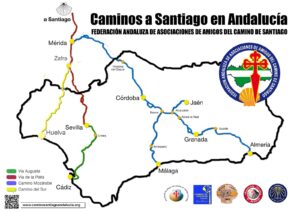
-Continuing with the territorial aspect and the ways, what is the role of the Andalusian Federation in the Vía de la Plata?
-The Vía de la Plata is very important for Andalusia, the first path that was signposted from Seville is the Andalusian path that has the most pilgrims, from this path we have learned all the associations. The Vía de la Plata has only a few kilometres in Andalusia, it does not reach 90 and the Vía de la Plata Association is an example of work and perseverance for the rest of Andalusia. It must also be said that the Sevillian association has been in charge of monitoring and reviewing sign- posting as far as the Castilian-Leonese community, and has also reviewed the stages in the province of Huelva corresponding to the Camino del Sur.
-Still in relation to the Caminos of Andalusia, I would ask you to introduce La Vía Augusta…
-The Vía Augusta runs through two provinces. The distance between Cádiz Capital to the Metropolitan Cathedral of Seville is about 175 kilometres, it is next to Almería the beginning of the longest Camino to Santiago on the peninsula. If leaving the city of Cádiz has its “pedigree status”, the passage through the city of Jerez is impressive, already in the province of Seville Utrera and Alcalá de Guadaira give a special colour to this way before reaching Seville. The Association of Friends of the Camino de Santiago in Cádiz, based in Puerto de Santa María, is aware of what is happening in the province of Cádiz and the Association of the Camino de Utrera is the one that works in the province of Seville.
-Yours is a Federation that takes care of the ways of Andalusia, but also of the pilgrims who go to Santiago by any of its ways or routes, that double function must be difficult to sustain…
-For many years now, we Andalusians have won first place in the ranking of pilgrims who arrive to Santiago, or so the statistics say. We are ahead of people from Madrid, Valencia or the Catalans… And the Andalusian associations are largely responsible for this. Each association has teams of volunteers who advise any pilgrim or person interested in doing the Camino.
Our paths are not the most populous in terms of number of pilgrims, they are also very seasonal, spring and autumn are the most crowded times- because the summer heat and the winter cold complicate matters for pilgrims. We work hard to make everything work well, we have digitalization and road sign projects underway, we organize activities in way cores, there is also work with institutions. Among all the jobs I would like to highlight the sign posting, which is a very important job, and the truth is that the Andalusian ways are very well sign posted.
-I would like you to explain to us the daily work of the Federation, the basic work: what are the usual tasks that you deal with in the Federation?
-We usually meet at an annual meeting in which we debate what to do or even what not to do. But our main objective is to try to reach the administrations as a group, to do it collectively to have greater strength, the group is what creates our strength. Thanks to this group work, the livestock routes to Santiago are currently being fixed, 5 million euros are being invested throughout the territory of Andalusia to improve the surface of the ways and, logically, the sign-posting.
So, group work is essential, also for hospitality issues. We also work a lot in this area, together we are building a network of Andalusian hostels.
-You refer to hospitality, it is an aspect that I would like you to develop in more detail, its role in the Federation: the management of its own hostels, collaboration with other institutions, the training and sending of volunteers…
-The Federation itself does not directly manage any hostel, each Association in its territory looks for who can manage the hostels, the vast majority tend to be municipal hostels, the Almería – Granada area does have hostels managed by the association in that area. Although it may seem incredible, in smaller towns the collaboration is even greater with local entities.
Regarding training, the HOSVOL (Voluntary Hospitallers) of the Spanish Federation of Associations of Friends of the Camino de Santiago collaborates with us, and every year we try to organise a training course given in Andalusia.
-Beyond daily work, are there or were there other projects? Could you tell us about any past or ongoing ones?
-Many years ago the Andalusian Federation participated in the project that defined the Mozarabic Ways in Andalusia and Extremadura, therefore, it participated in the delimitation of the paths and, from there, in other projects that emerged in that area. Right now we are participating as advisors in a SEMTAYR project, a European project that is laying the foundations to consolidate the ways from Andalusia to Santiago, an important project with four Autonomous Communities involved. And there is also a project currently on the Mozarabic paths that deals with the digitalization of the Camino, digitizing the information, but also being able to provide Wi-Fi to public hostels, etc.
-The future: What future projects does the Andalusian Federation have? Any dreams on the horizon?
-There is an Association of Municipalities of the Camino Mozárabe in the province of Córdoba, it is our intention that all municipalities should try to be partners in this association, the push would be very important for the Camino itself.
Already in Andalusia we were able to reach parliament so that the rules governing the paths included the paths to Santiago that are present in the IGN maps. Now, we are involved in a study so that the Andalusian Paths to Santiago have a LAW OF THE WAY OF ST. JAMES.
-Returning to our interest in the human element: Any figure or figures that you want to remember for their contribution to the Andalusian Federation?
-Yes, there are several people who started the paths through Andalusia in the last century, Pepe Cano in Malaga or Fernando Navarro in Córdoba, Hermenegildo de la Campa in Granada, there are some more that should be remembered. Also there should be highlighted several people who are central to Andalusian Jacobean associations: Juan Ramos, Juan Guerrero, Isidro Rodríguez…
-To finish, I would like to ask you about your dreams for the Camino, those you have for your association in Jaén, but, above all, for yourself: Do you have any wishes left to fulfil on the Camino?
-I would like there to be people behind me who can replace me, in the near future and in a somewhat more distant future, we have already managed to get Jaén to appear on the Caminos to Santiago and we must continue to maintain this status so that people know our land of Jaen.
I have done almost all of the paths, since 2002 I have always been walking, from Jaén, SJPDP., Oviedo, Oporto… also shorter paths. What I would like is to do the Camino with part of my family, yes, for me the best thing would be to be able to do a long Camino with my daughter, with my granddaughter, with my family.

